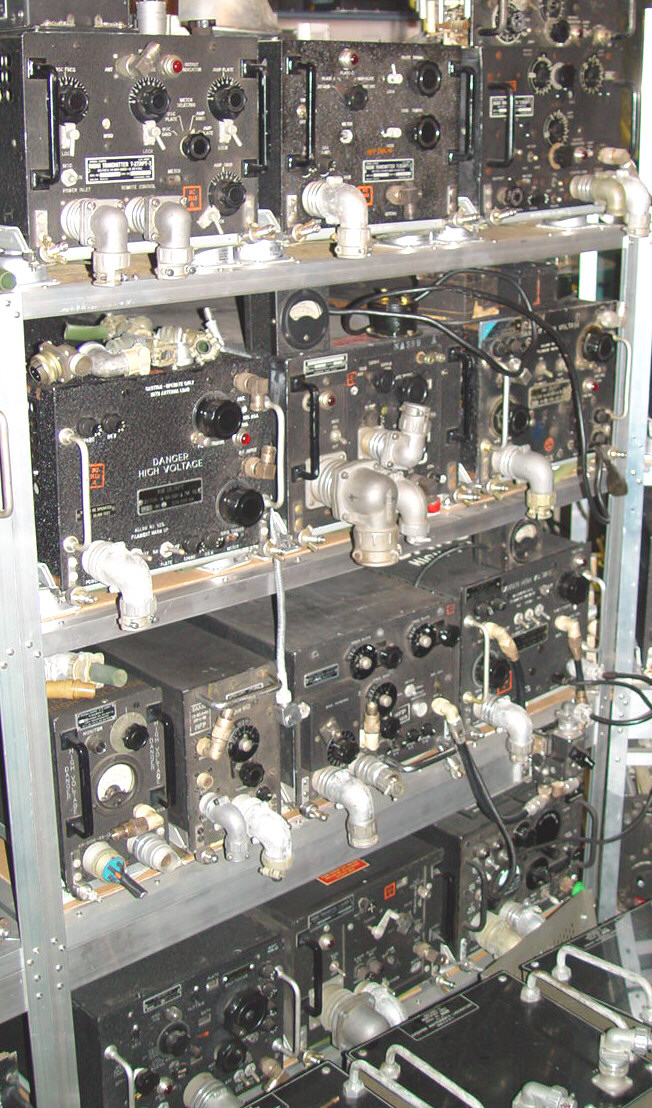The Jammers

Shown here are the more common airborne jammers used during the war, along with links
to expand on the individual pieces highlighted. Code names were assigned to each of
the jammers to enhance security and make it easier to remember the growing array of capabilities
that was represented by the various models.
Beginning at upper left
is an AN/APT-3, with the
AN/APT-2 and
AN/APT-1 to its right.
On the second row is an AM-18/APT
Class B linear amplifier, used to raise the power level of jammers in
the 140-210 MHz range to 100W. In the center is a training version of the
APQ-2
jammer, and to its right, an
AM-14/APT - another Class B linear designed to work
in the 85-150 MHz range, also with a power output of 100 watts.
The third row, left
to right, starts with one of a series of five jammers aimed at disrupting German
tank radio traffic, the ART-6 through ART-11. This particular one is an
ART-7,
which covers the 10 meter ham band. To its right are three pieces covered on
another page, the ARQ-8.
Both that ART-7 and ARQ-8 were intended as communications jammers, targeted towards
German capabilities, but represent an entire series of such jammers. Two more (not shown in this bay) were the
AN/ARQ-1 and the
AN/ART-2. The ARQ-1 was
one of the first integrated spot jammers made for communications jamming, incorporating
a receiving capability to determine specific threats and then switching to jamming mode.
It joined a variety of conventional AM transmitters that had noise sources added to them but
needed sometimes complex tuning procedures before the jamming was effective.
Since its development was parallel to other more capable systems, its operational use was
rather short. The ART-2 had a higher output power but was rather specifically designed for
installation in single seat carrier fighter planes for use as a barrage jammer against Japanese walkie-talkies.
The bottom row, left to right, displays the
AN/APT-5,
APQ-9, and
AN/APT-9 jammers.
Most of these jammers respond to minor reversible conversion to AM or DSBRC
operation on the ham bands, though their stability is sometimes not the greatest.
Frequency setting can be a bit of a chore as well.
The antennas used with these jammers can form a daunting collection effort all by itself. The more complex ones represent a sea change
in understanding the physics of wave propagation and impedance transformation to open air. Below are some of the more
common antennas that were designed and deployed in WWII for this equipment:
AS-251 fishhook antenna, used with APT-2, APT-5, APT-9, and APQ-9 jammers
AS-69, the predecessor to the AS-251 - part of the Carpet jamming system against Wurzburg radars
Return to AAFRadio
